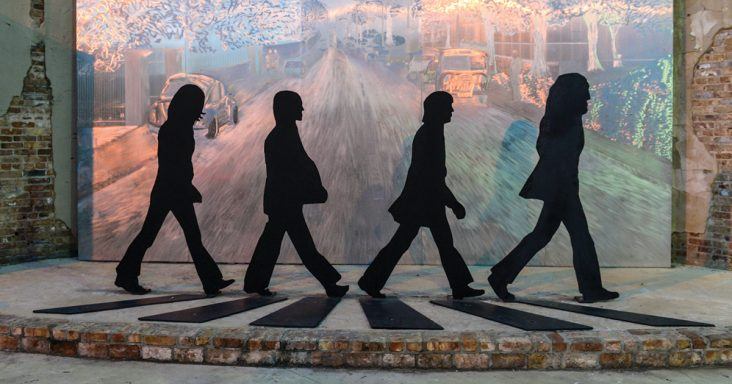Northeast Arkansas tourism following state trends
by June 9, 2019 9:53 am 986 views

The Beatles Abbey Road art sculpture in Walnut Ridge.
What does a NASCAR legend, a British pop phenomenon, and one of the most famous novelists in American history have to do with Arkansas tourism?
For Northeast Arkansas, Mark Martin, The Beatles and Ernest Hemingway are just part of what draws thousands of visitors to the Natural State every year. In recent years, area tourism — like the rest of the state — is on the rise.
“We are progressively getting better at using digital media and connecting with all those algorithms that Google and others use to identify, get feedback and assure ourselves that we’re getting a return on our investment,” said state Tourism Director Jim Dailey.
There are two major tourism regions that envelop the largest swath of Northeast Arkansas. The Ozark Gateway and the Delta Byways regions combine 23 counties up and down the eastern Delta and across half of the northern tier of the state. More and more, communities are finding ways to capitalize on properties, artifacts, events and history in an effort to appeal to those travelers who are seeking personal and family experiences.
“For Arkansas, I think we are becoming more and more discovered. We’re seeing not just U.S. citizens, but foreign travelers that are looking to go to the places that are a little bit off the radar screen in the past, that have authentic adventure experience,” Dailey said. “Hit on Arkansas.com and you’ll be amazed at what’s out there.”
Cathy Drew, executive director of the Ozark Gateway region for tourism, oversees tourism destinations that range from the Ozark Folk Center to Blanchard Springs Caverns, six state parks, and four 18-hole golf courses. Add to her tourism mix a number of lakes, fishing and canoe streams like the Spring River, museums, the Batesville Motor Speedway and Beatles on the Ridge at Walnut Ridge. These attractions don’t count a number of shopping towns like Mountain View, Calico Rock and Cherokee Village.
“We rely on a combination of state and regional promotion as well as local efforts promoting festivals and everything else we have to offer,” she says.
Statistically, her eight-county region doesn’t rank high in producing a large amount of tourism tax revenue. However, a little bit goes a long way in the area that stretches from Newport to Mountain View to Pocahontas.
“Tourism in our region is extremely important. A festival or event can bring a large number of travelers to the area. They help put people in motels, in restaurants and other shops in the area. This is a big impact on the local economy and helps everyone prosper,” Drew noted.
Last year, Arkansas’ 2% tourism tax set a new record in overall collections bringing in $16.428 million, a 3.34% increase from 2017. It was the ninth consecutive year of revenue growth. Already in 2019, the tax has generated $4.134 million among all 75 counties, up 5.33% compared with the same period in 2018.
Among the five most active counties for tourism and business travel in Northeast Arkansas (see sidebar), the state’s 2% tourism tax generated $192,024 in the January to February period, up 4% compared with the same period in 2018. However, three of the five active counties showed declines.
As the numbers indicate, one month of good collections could swing the year-to-date totals in a different direction quickly. With summer approaching and tourism draws ratcheting up their appeals, officials are expecting a solid year of additional growth for the industry.
“We’re already seeing numbers that are higher this year than last year,” said Dailey. “In 2018, there were 30 million visitors, 66,000 jobs, a nearly $8 billion economic impact — visitors prime the pump for Crystal Bridges [Museum of American Art], the [Clinton] Presidential Library, the Johnny Cash [Boyhood] Home, and the Murphy Arts District and on and on and on.”
Drew says that despite good gains and a variety of attractions, the business of tourism relies on constant innovation, vigilant upkeep, and new features to give visitors reasons to return.
“With any tourism area, new attractions are always a dream, and simply a little work keeping current destinations up to date is important. Curbside appeal is always vital to any community and we are spreading the word about how important it is to make sure your community is working hard to make their towns appealing to prospective visitors,” she said.
